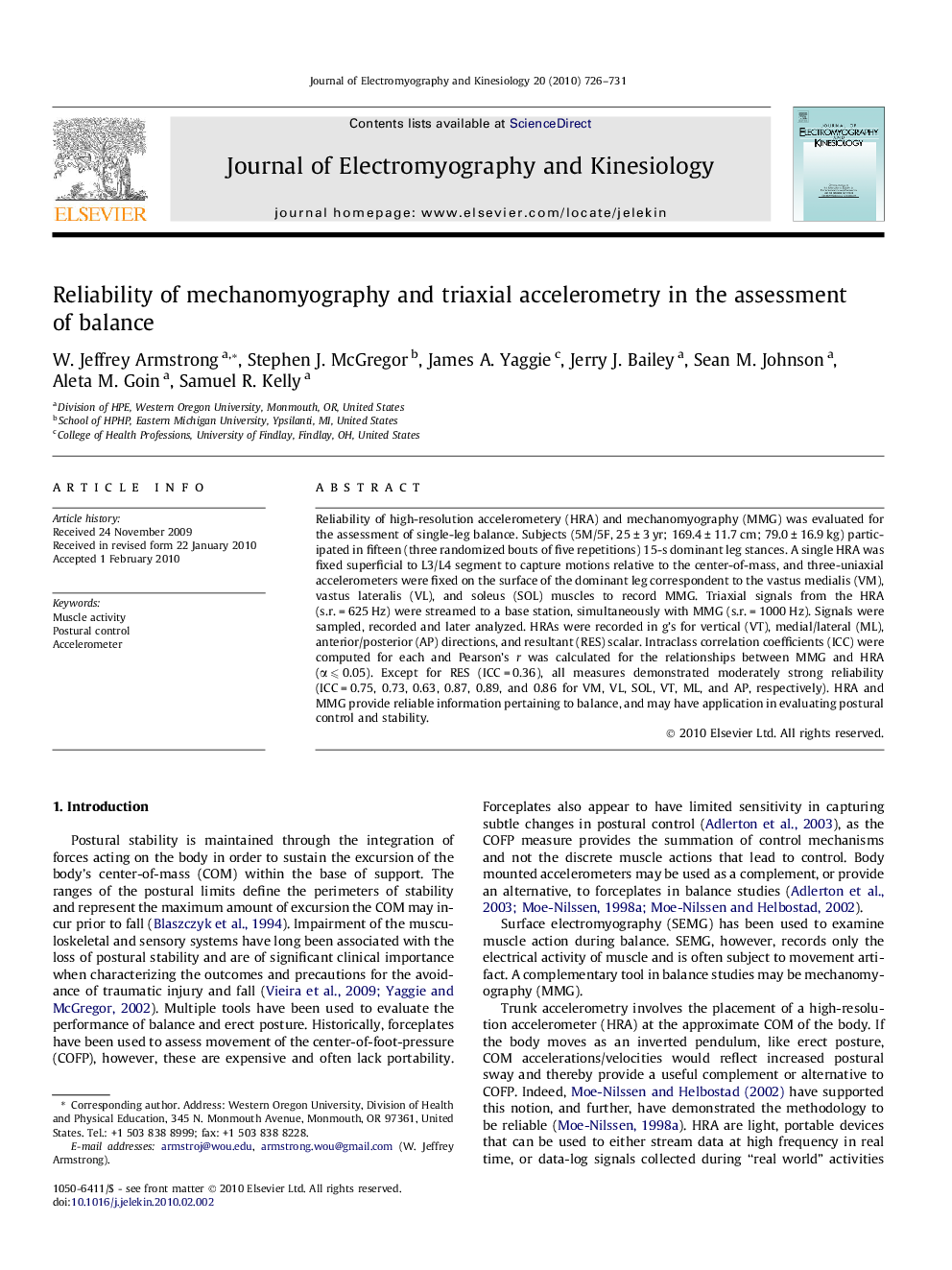| Article ID | Journal | Published Year | Pages | File Type |
|---|---|---|---|---|
| 4065173 | Journal of Electromyography and Kinesiology | 2010 | 6 Pages |
Reliability of high-resolution accelerometery (HRA) and mechanomyography (MMG) was evaluated for the assessment of single-leg balance. Subjects (5M/5F, 25 ± 3 yr; 169.4 ± 11.7 cm; 79.0 ± 16.9 kg) participated in fifteen (three randomized bouts of five repetitions) 15-s dominant leg stances. A single HRA was fixed superficial to L3/L4 segment to capture motions relative to the center-of-mass, and three-uniaxial accelerometers were fixed on the surface of the dominant leg correspondent to the vastus medialis (VM), vastus lateralis (VL), and soleus (SOL) muscles to record MMG. Triaxial signals from the HRA (s.r. = 625 Hz) were streamed to a base station, simultaneously with MMG (s.r. = 1000 Hz). Signals were sampled, recorded and later analyzed. HRAs were recorded in g’s for vertical (VT), medial/lateral (ML), anterior/posterior (AP) directions, and resultant (RES) scalar. Intraclass correlation coefficients (ICC) were computed for each and Pearson’s r was calculated for the relationships between MMG and HRA (α ⩽ 0.05). Except for RES (ICC = 0.36), all measures demonstrated moderately strong reliability (ICC = 0.75, 0.73, 0.63, 0.87, 0.89, and 0.86 for VM, VL, SOL, VT, ML, and AP, respectively). HRA and MMG provide reliable information pertaining to balance, and may have application in evaluating postural control and stability.
